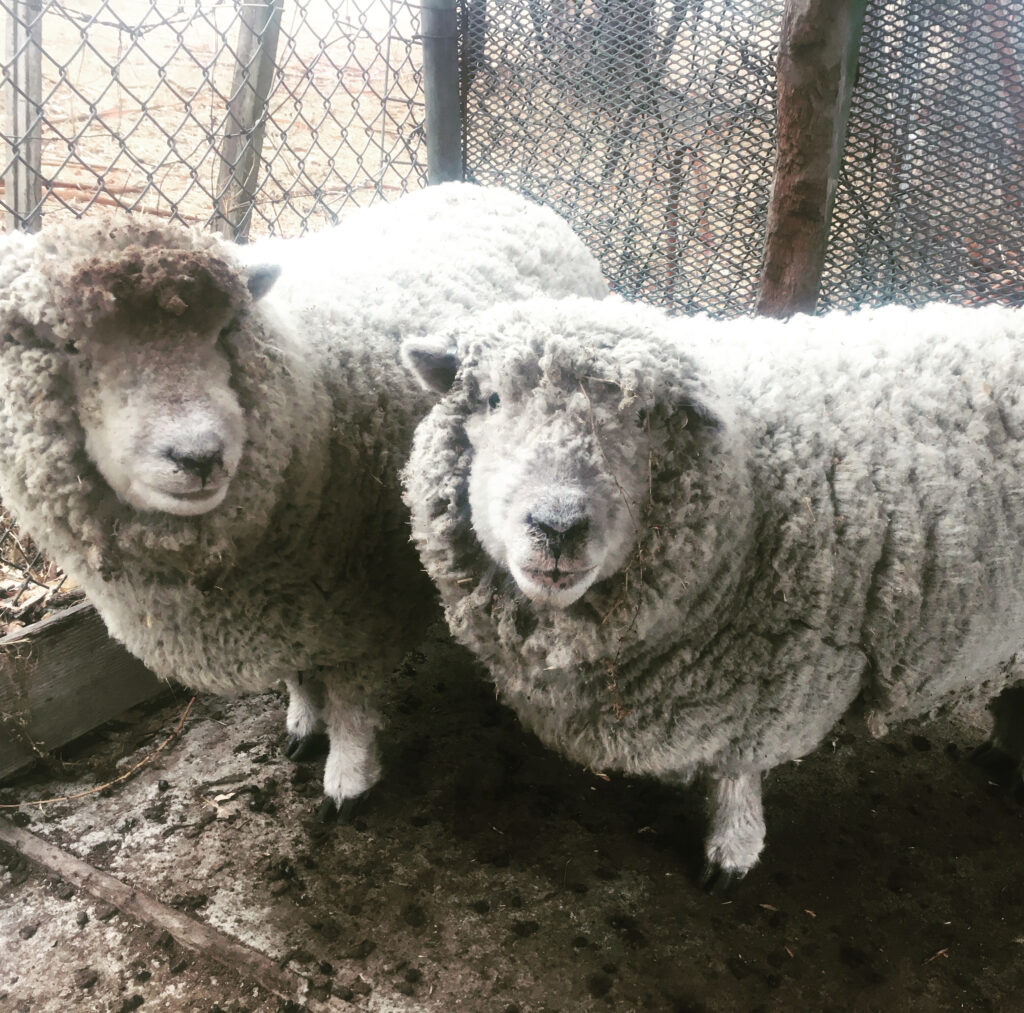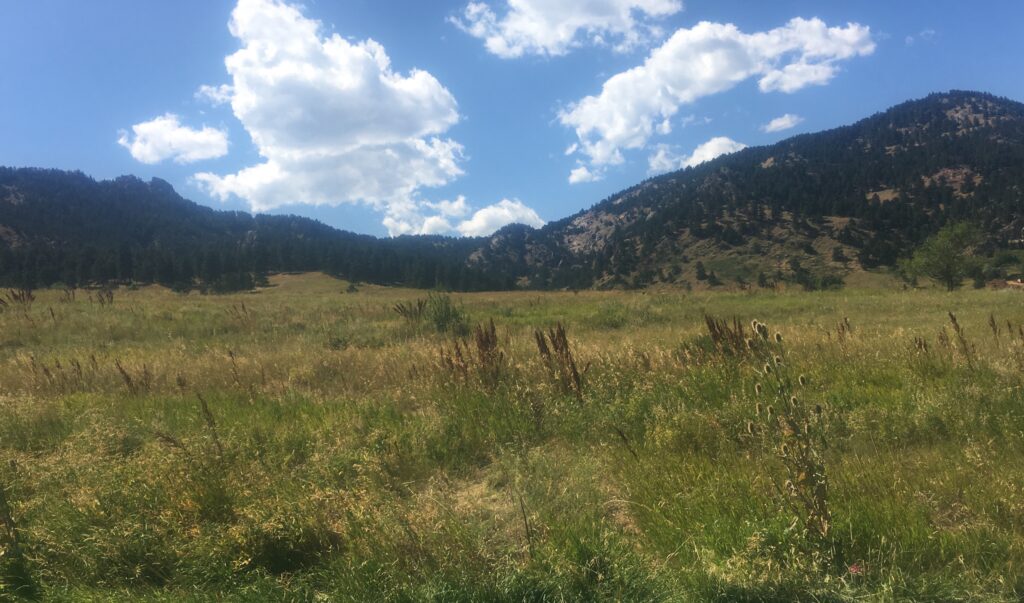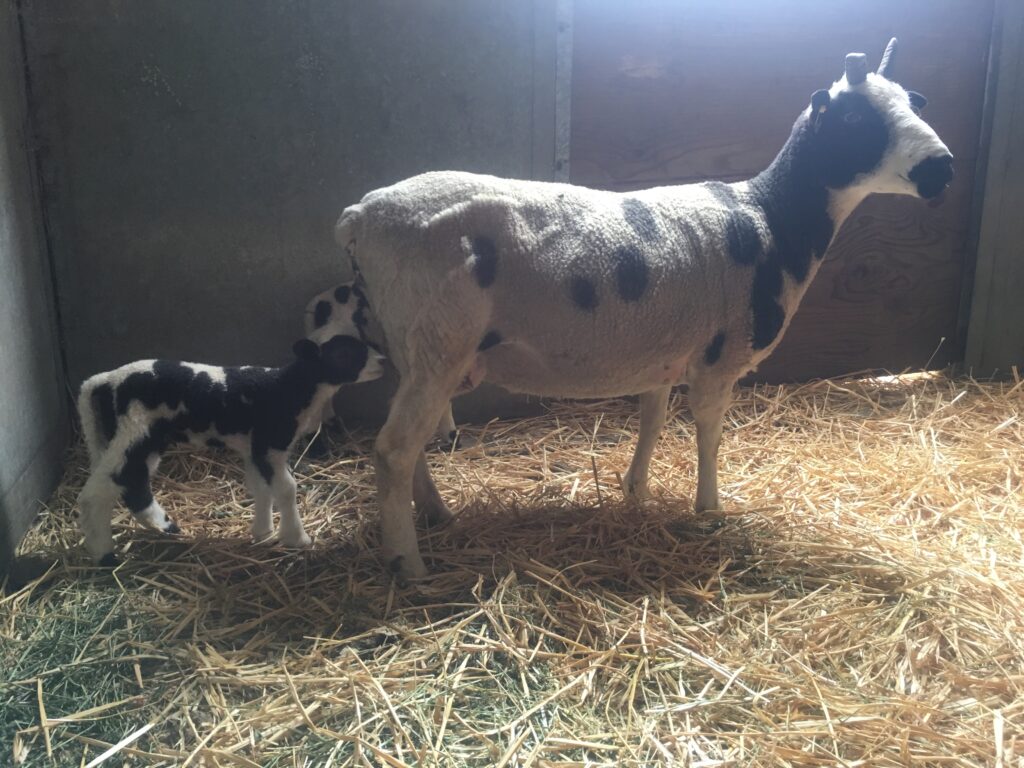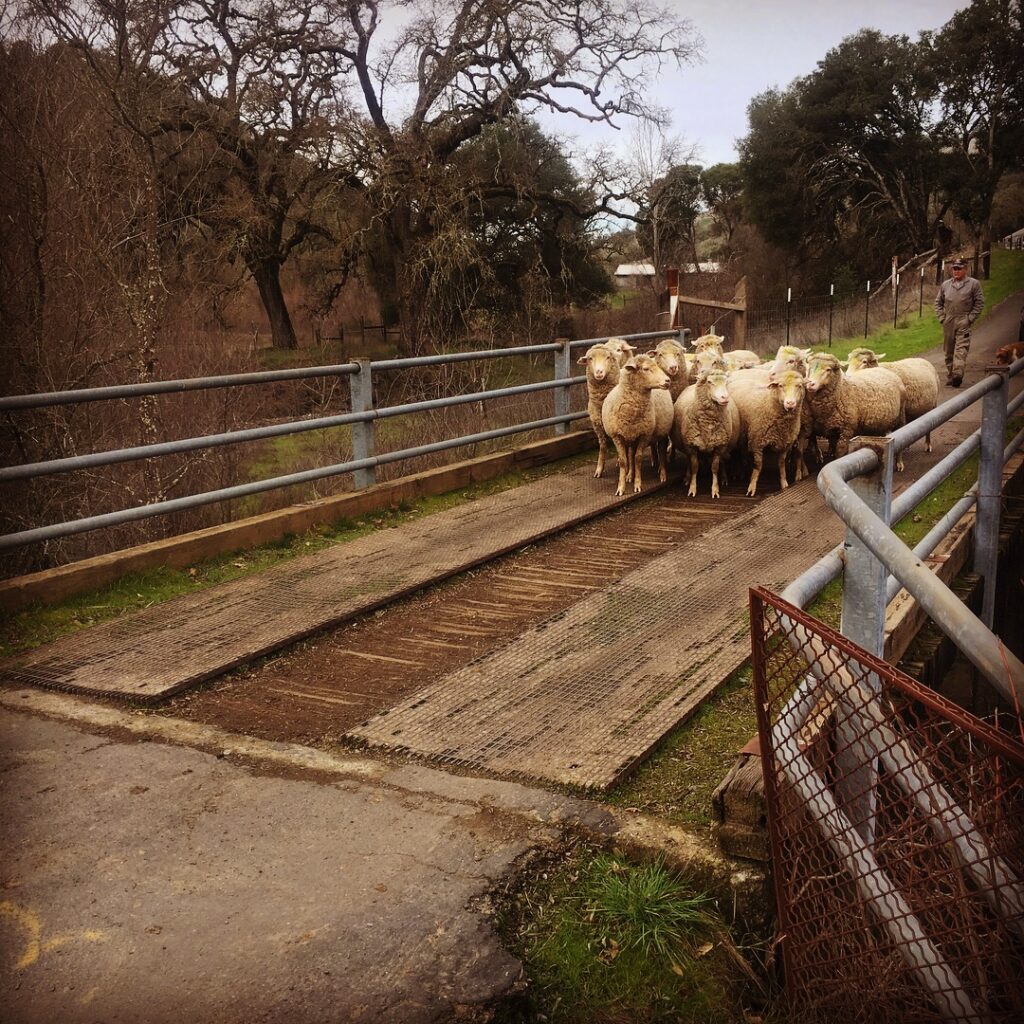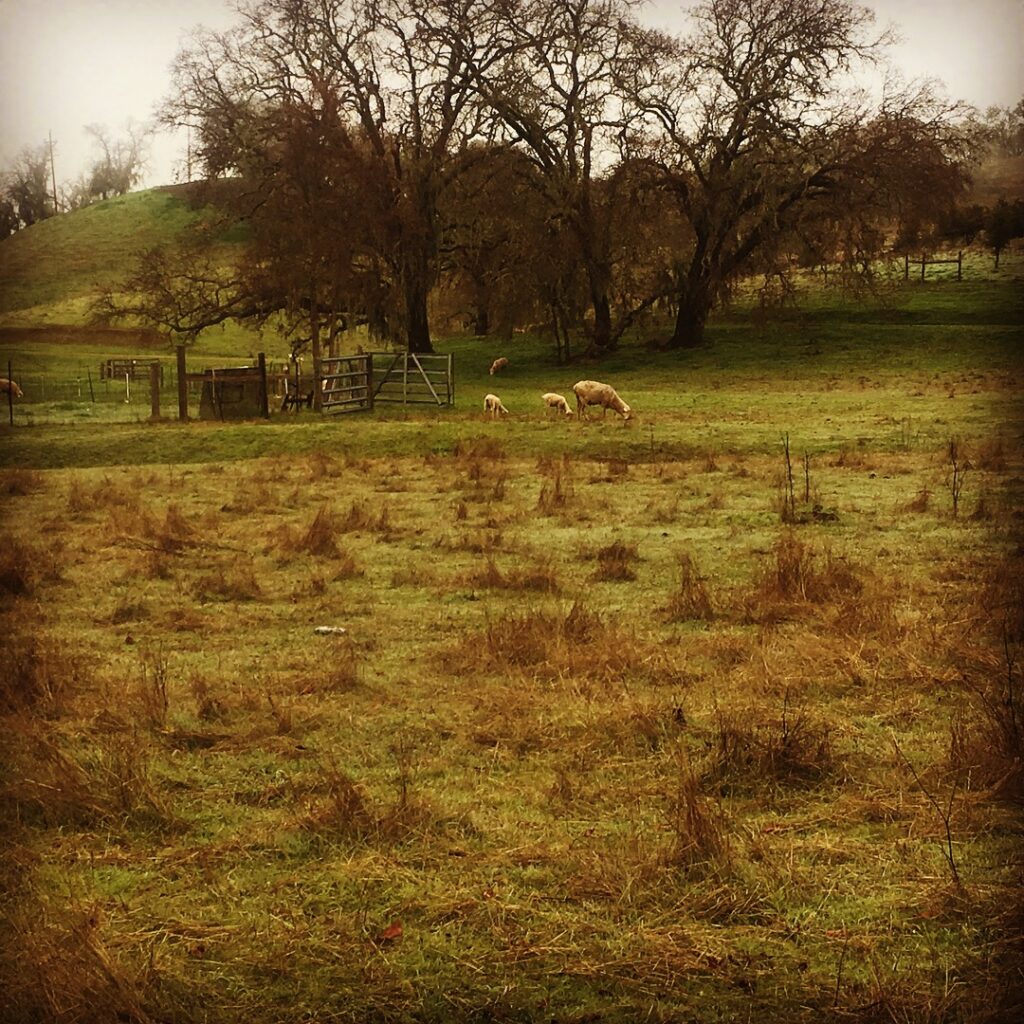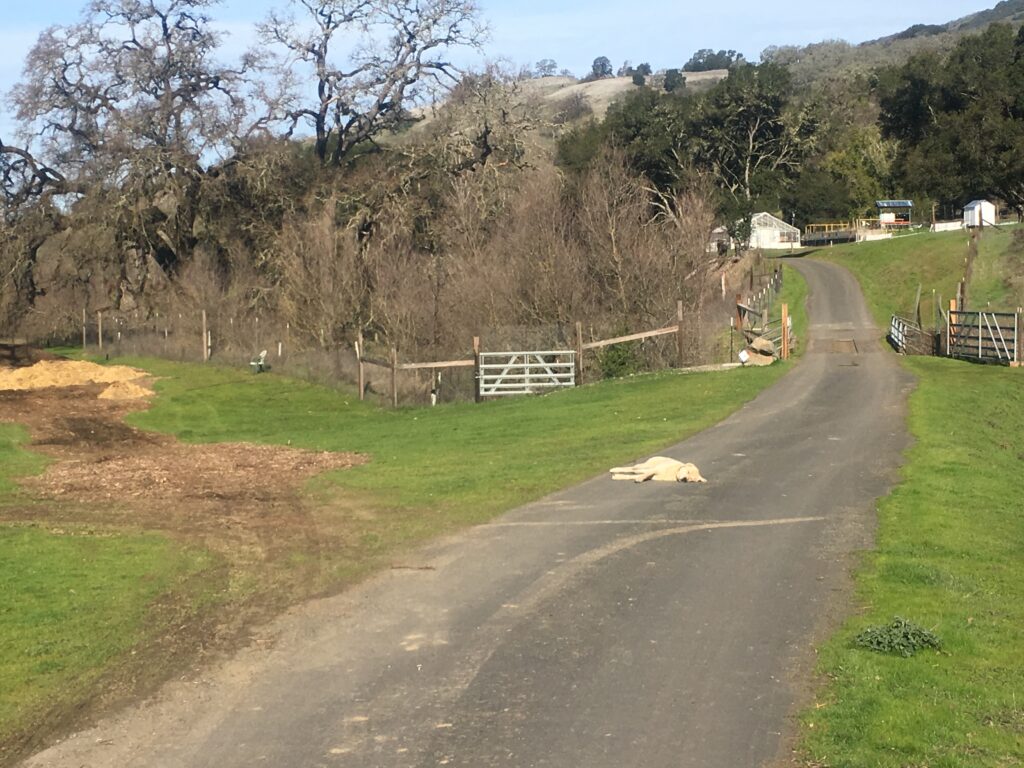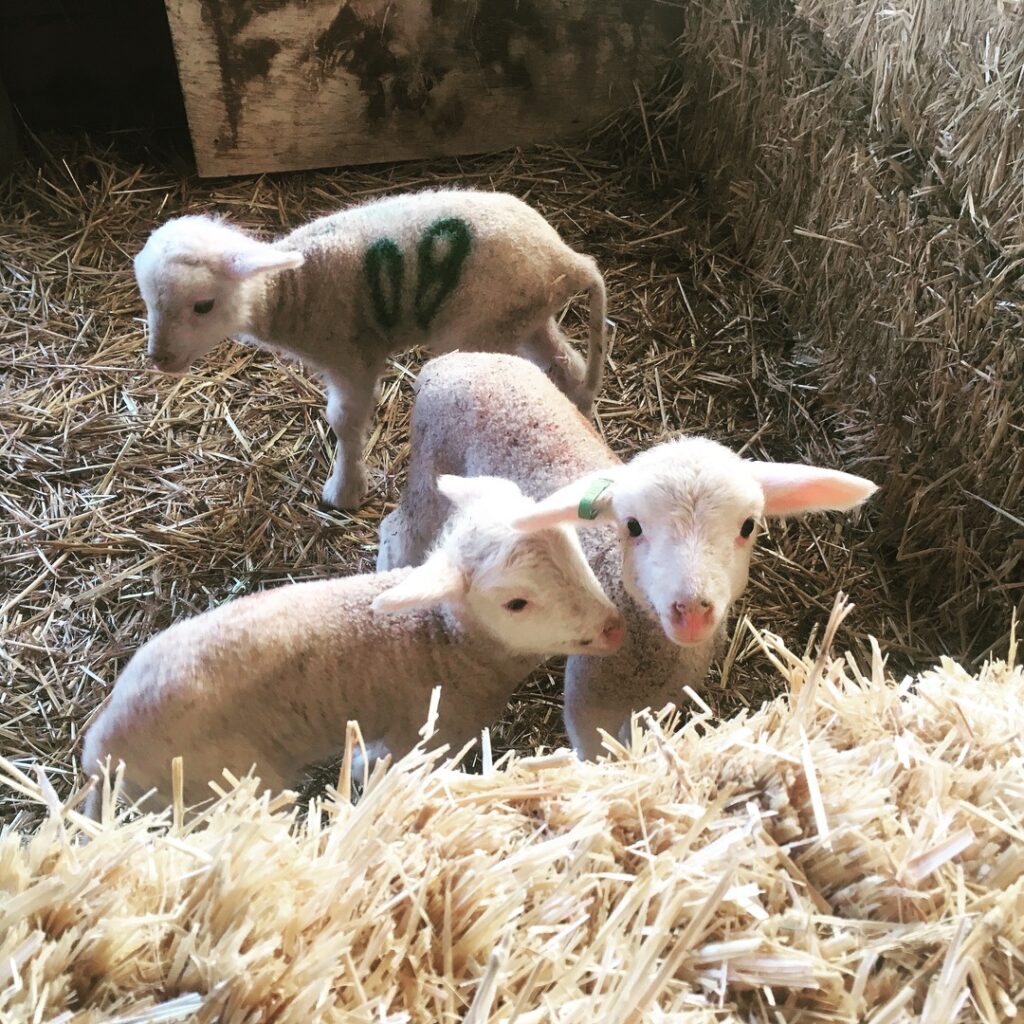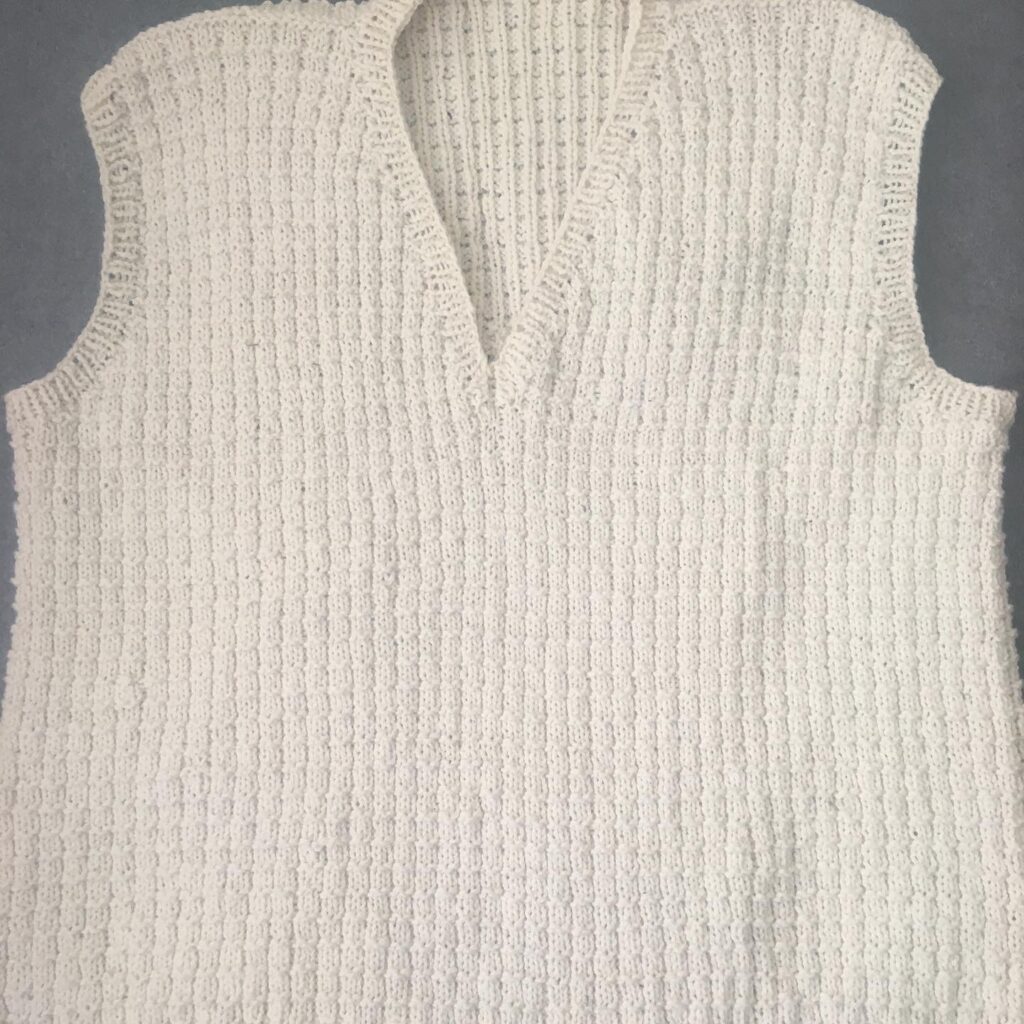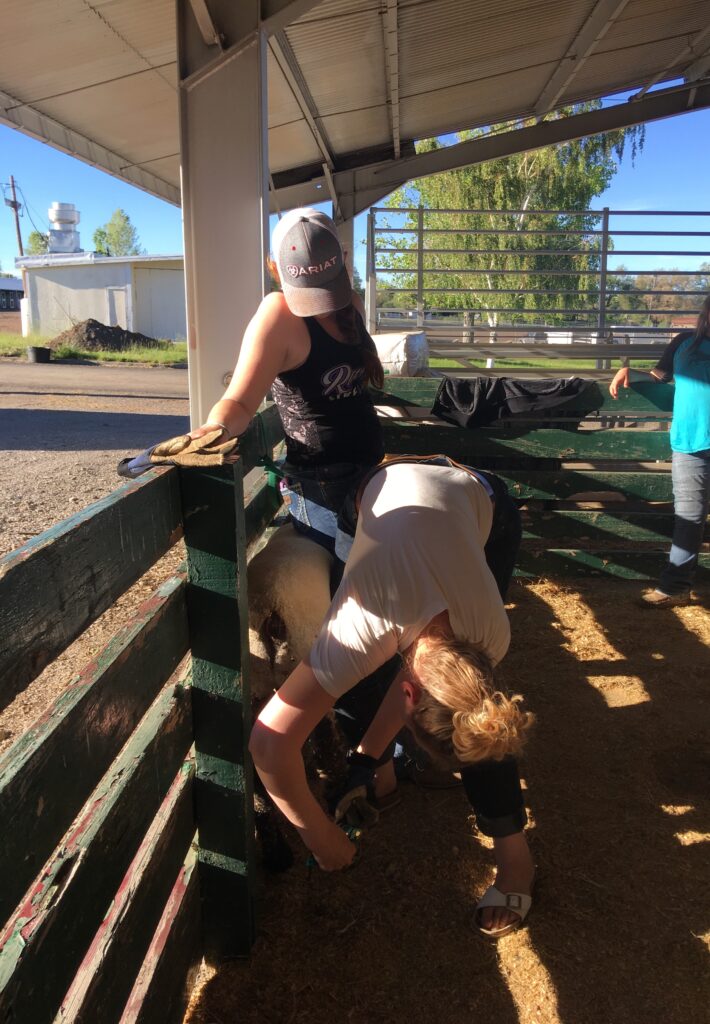How To Be Mostly Prepared All The Time, With Low Stress and Low Expense
Over the past few weeks, folks who know Best Husband and I have asked, “Is anything even different for you? You’re probably fine, huh?” or said “I imagine this is just another day for you.” They are mostly right, aside from constant worry and periodic crying about our family member with Coronavirus in an ICU.
Since I have some extra time, I figured I would explain what our normal is, which made our panic-free, “we’re fine for a few weeks” condition true. I thought some of these may make for fun quarantine projects, too.
First, a few disclaimers: This post is not intended as either advice or smugness. This is simply the way we live and what works for us, in our region, with the types of emergencies we have to prepare for. We have had three, very terrifying, traumatizing wildfire seasons to literally light a preparedness fire under our butts.
What we do is not very intentional, but an automatic side effect of frugal living. You will find no signs of Doomsday-Prepper hoarding at our house. Our house is 860 sq ft. (twice the size of our last apartment). We have no basement or attic; we have no pantry aside from some very limited, shallow space beneath our stairs; and we actually park our car in our barely-one-car garage, so there’s not much storage in there. You should also know I’m as lazy as they come about food preservation, so you won’t even see walls lined with jars of food. What we do is not expensive and it’s not time consuming.
The things for which we prepare in Nor Cal are wildfires and earthquakes. Wildfires mean smoky air, N95 masks, staying inside, air filters, possible evacuation (full gas tanks, etc.), and power outages as a wildfire prevention measure. These preparations turned out to be helpful when a pandemic hit. (We’re still not up to speed on the power replacement stuff but I’ll get there.)
So here’s what we do in simple alphabetical, not priority, order.
Air Filters: We have acquired two, small cylindrical ones over the past three fire seasons. We don’t have a lot of space, so these are a nice size. We move them around to the rooms we’re in at the time.
Bees: None. I am allergic to them so HUSBAND has banned me from bee keeping. I know, I know. The worst guy alive, right?
Cash: This is for power outages more than anything else. A few months ago, when power was out for days and days, many businesses were open but couldn’t run credit card transactions. I was astonished because, in this case, the power shut-offs were preventative and we had advance warning…and people still did not have cash on hand. Have some cash on hand.
Chest Freezer: Ours is more than 10 years old, 8 cubic feet, and at the time we purchased it, cost a bit more than $200. I think the smallest ones are usually 5 cubic feet. Here is a similar one (slightly larger and more expensive). In pre-pandemic times, you could often find chest freezers on Craigslist for free, or near to it. I’m not sure about right now.
We bought this chest freezer when we were renting a small apartment with no outdoor space or parking. Our landlady at the time let us keep it in the garage, thankfully. About 11-12 years ago, we started buying whole and half animals directly from farmers to save money (a lot of money, like the difference between $4/pound and $19/pound on grassfed beef), and we still shop that way.
Which brings me to a digression on being a lazy food preserver. I keep everything in the freezer. The chest freezer is my Laziness Enabler. Anything with oils or fats that can go off/get rancid goes in there: butter, leaf lard, coffee beans, flour, cheese. Likewise all kinds of garden bounty, because I don’t always have time for canning. I’ll dice and freeze our tomatoes, and freeze servings of mashed potatoes. If I pick 40 pounds of potatoes out of one garden bed in one day (and is not even our total haul for the year), that is more than we can use quickly. Instead, we make a massive stock pot of mashed potatoes, and freeze them in small containers for easy dinner sides.
I freeze chopped rhubarb, and some greens like collards (another massive garden haul item that comes in all in one day). We flash boil them, chiffonade, and then wind them up in little nests and set the nests on a baking sheet. We place the sheet in the chest freezer and, when the nests are frozen solid, we put them into containers or plastic bags so that, when we want greens in our soups and such, we just toss in a collard nest and call it a day.
For chicken stock, we are bone savers. Yeah, that’s us, the people at the Indian restaurant who finish the Tandoori chicken and then say we need a to-go box for the carcass. On stock-making days, we do the Julia Child method: We reduce the big vat of stock way down (so it’s stronger and more intense), and pour it into several ice cube trays so that we can just grab a cube or two when making soup, polenta, or rice…or when we just need a mug of stock and some good salt. Plop a stock cube in a mug, dissolve in boiling water, and drink up.
Chickens: None.
Coffee Beans: Don’t judge. I love coffee, and it will keep any emergency much more bearable. I usually have 2-15 pounds of beans in the freezer, and 100-200 coffee filters. I am watching my quantities during this pandemic and not wasting a drop. Is there half a cup left in the carafe? Then it’s going on the stove and being reheated and not wasted.
In case of power outages, I have my grandma’s percolator and a French press. The back-up coffee is the backpacking instant coffee stored in — you know it! — the freezer. Starbucks Via is pricey but tasty.
Cold and Flu and General Crappy Feeling Supplies: We keep one container of powdered Gatorade or other electrolyte mix on hand. One small container can make you gallons of the stuff. We keep Ibuprofen (though anti-inflammatories make COVID-19 worse so you don’t want ’em here!), Tylenol, aspirin, cough drops. That’s pretty much it.
This includes first aid, of course, but I’m a sheep shearer so there’s always a good box of that. We have just a few N95 masks left from wildfire times because those are for health care workers and we don’t hoard those – RIGHT?! Right.
Dog Food: Two 40-pound bags of kibble type food. After that he’s subsisting on rice and scraps like the rest of us.
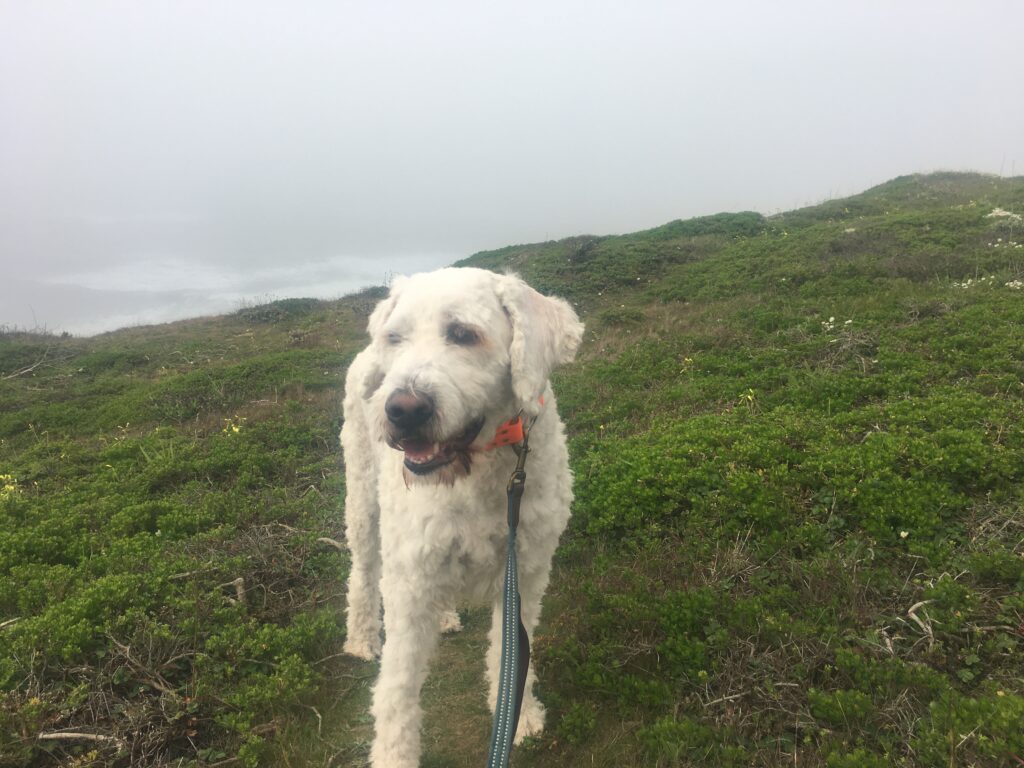
Farm Box and Buys: We loaned a farm CSA money over a decade ago and get paid interest in fruit, vegetables and eggs ever since. We are very glad to have this right now. I also have a whole lamb coming in a few months. This is more normal stuff that turns out to be an exceptionally great thing right now. I also know a few farmers I can all if we really need more meat, but we still have plenty of that in the… CHEST FREEZER, YEAH!
Food Staples: I keep 25 pounds of flour in the freezer (20 pounds of organic all-purpose from Costco, sold in 10-pound bags), plus 5 pounds of heirloom grains like Sonora Wheat etc. from local farms. There is also 35-40 pounds of rice, a combo of white and whole grain, and several pounds of dried beans. We use this stuff all the time so I scoop smaller quantities into jars and keep those in the kitchen. We also have sugar, nuts, tuna, dried fruit – not too much, just some.
Garden: I am unspeakably grateful to the earlier selves who prioritized the garden we now enjoy. Even though it’s a slow time of year and has been cold, we have rhubarb, chard, spinach, some lettuces, and lots of miner’s lettuce (an edible weed that the gold miners ate). We grow every kind of vegetable and berries and got our first few apples last year; pears are coming we hope. Is it enough to live on? No. Does it supplement the staples nicely? Yes.
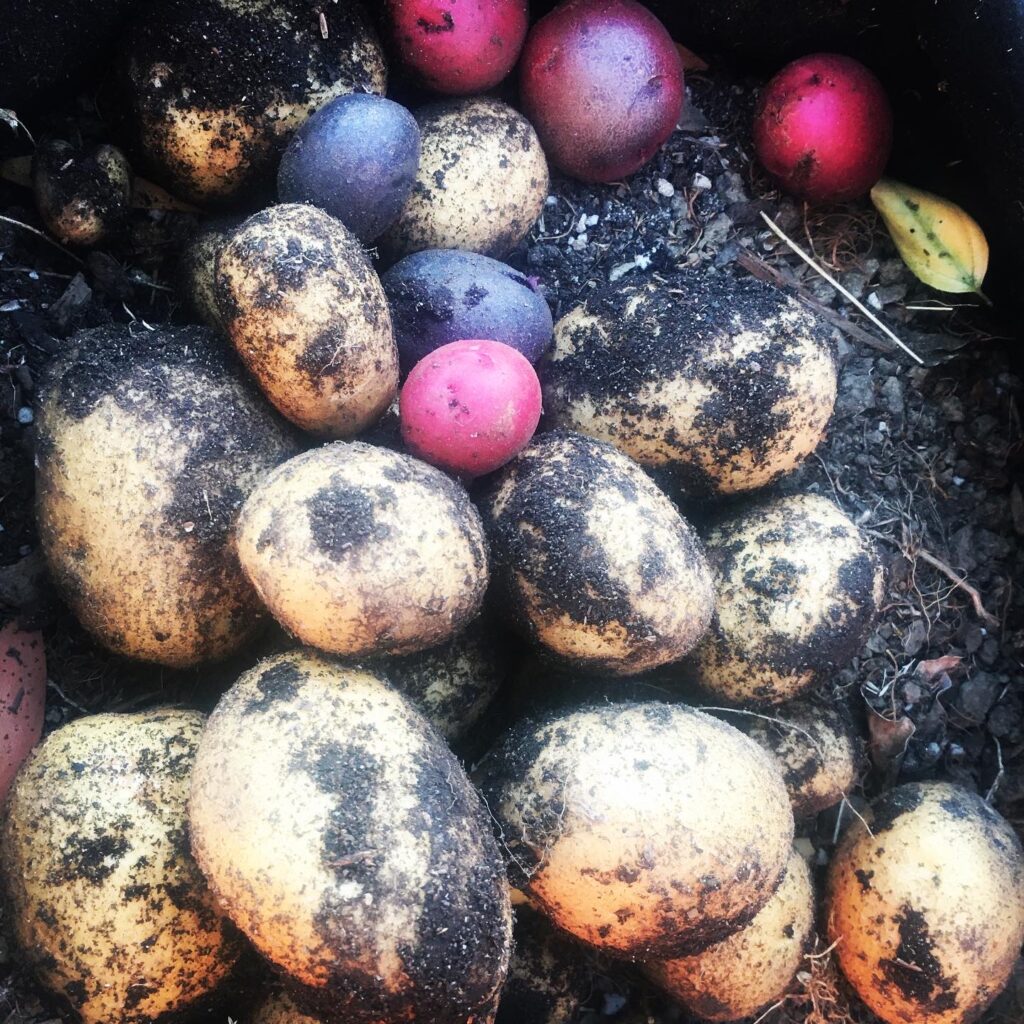
Gas Grill: We keep two tanks of propane at all times, so we have a full back-up to cook with if we need it. This is how we cook if the power is out. Our grill has a burner we can boil things on, like water, so we can do coffee in a percolator. A camping stove would be a fine, affordable substitute.
Line Drying and Laundry Rack: I have a folding laundry drying rack to keep everything consolidated, and some outside lines. We don’t use the dryer much in general, and couldn’t during a power outage, but we also don’t want to dry things outside when there is wildfire smoke. The rack plus some hangers is nice to have.
Menstrual Supplies and Birth Control: If either or both of these apply to you, consider (in the spirit of my toilet paper points later in this piece) Party In My Pants cloth pads and a long-term birth control solution, like an IUD. Our for-profit medical system gives various types of IUDs 5-10 years, but in most other countries, they are approved for much longer use. Whatever your practice here, you may want to check in with it for any supplies you may wish to have on hand.
Minivan: This is a new addition. We bought a lightly beaten 2008 Toyota Sienna with 72,000 miles on it in January. There were a lot of reasons for this purchase (shearing trips, 90-pound dog transport, hauling bags of wool and fiber goods around), but wildfire evacuation is one of them. We can live in the Sienna if we need to. Nor Cal people know I’m serious and how nice it is to have a liveable vehicle when there are fires in every apparent direction and you have no idea where you’ll end up.
Paper Goods: We buy in bulk so we generally have at least a few months worth of toilet paper on hand. But I will take this opportunity of cultural toilet paper hoarding to share what I’ve learned in travels all over the woods (weeks alone in the back country) and in many parts of the world where toilet paper isn’t a thing. If you’re squeamish…read on!
First, there are bottle bidets (a squirt bottle with water inside), the right kind of leaves, and a shovel. A hole in the ground is always cleaner than a public bathroom, my friends. You’ll be fine.
Second, there are places on this very planet where people use scraps of cloth like toilet paper, which is conceptually not so different from cloth diapers and the way people used those for ages: 1) wipe your butt, 2) immediately scrub out the cloth in the sink with soap and water, 3) hang that up to dry, 4) wash your hands real well, and 5) that’s that. You are still alive!
Northern Michigan outhouses also showed me the massive Sears catalog and outdated Yellow Pages work real well as a 2-in-1 reading material and toilet paper. Perhaps you’ll see those weekly circulars in a whole new (moon shaped) light now, eh?
Pellet Stove: Like many Nor Cal houses, ours is not insulated save for our roof. We have a pellet stove, so I start out winter with about a dozen bags of those at $5/pop. If you had a wood stove, you’d be covered with your cords of wood, hopefully.
Radio: We have an inexpensive, battery powered radio and a hand crank one that came in an earthquake kit.
Seeds: Obviously. We save these and keep them in a seed box, labeled.
Soap: Everyone has a vice, and mine (now MORE than justified) is farm soap, and goat milk soap in particular. This is my big treat THING. Shampoo bars, bar soap, the nice thing about all of it is that you can use it in your washing machine if you run out of detergent. Grate a little bit of your bar soap using a cheese grater, add some baking soda or washing soda to the grated soap, put it in the washer as normal, and all will be well.
Solar Panel: We have a tiny, portable solar panel (like this one) that I take to charge my phone on extended outdoor trips. I needed my phone to facilitate a self-evac out of Utah once, and was SO glad I had charged via that panel, crawling around on the ground with a 104-degree fever in October. It also works at home in an emergency, of course. It’ll keep our phones going, that sort of thing.
I have already explained my (over) reliance on our chest freezer. That is the one thing I want to keep going during an extended power outage. Now, on its own, the chest freezer (full) will stay cold for at least three days if we don’t open and close it willy nilly. My next preparedness project will be to purchase a larger solar panel with an inverter, so we can plug the chest freezer directly into the panel during the day (when there is sun), and then it would stay cold all night. This would also work for laptops, etc. If you’d like to learn more about this approach, check out the CheapRVLiving channel on YouTube. There are many examples of solar panels mounted on vehicles and stories of how folks use their inverters. This is much more affordable and feasible than a Tesla house battery or something.
Water: We have two, 50 gallon rain barrels (free thanks to the city of San Francisco Public Utilities Commission!) that get water via our garden shed roof (6’x8′). Obviously this won’t work in a zero rain year, but that is rare. Even in drought years, we salvage the little rain we do get and fill them. If I needed to use this for drinking water, I have my Sawyer water filters from backpacking.
The type I have are bags you fill up (from the rain barrel spigot, in this case), and then you squeeze the water bag to push the water through the filter. It’s lo-fi and works all over the world in rivers, streams, etc. Alternatively, we can boil rain water on the outdoor grill, if the power were out for wildfire prevention.
Plan B is our water tank. When our last water tank failed, we opted not to go to tankless so we would also have our water tank to tap if we needed it. We also keep a few gallons of distilled water in our tiny under-the-stairs pantry area.
Wipes: I take these shearing as well, but we did buy a few more packs of hand sanitizing wipes than usual in February, in anticipation of a virus and using these out in the world more than usual. We always have two small bottles of rubbing alcohol around (which seems to solve a lot of problems, like mystery hives and garden irritation, and it sure helps after my arms are shredded after shearing sheep laden with burrs or cheatgrass). We also have a small bottle of bleach. Diluted bleach in water makes a great disinfecting spray.
I’m sure there are dozens of things I’ve forgotten, but I’ll update this as a remember them.
